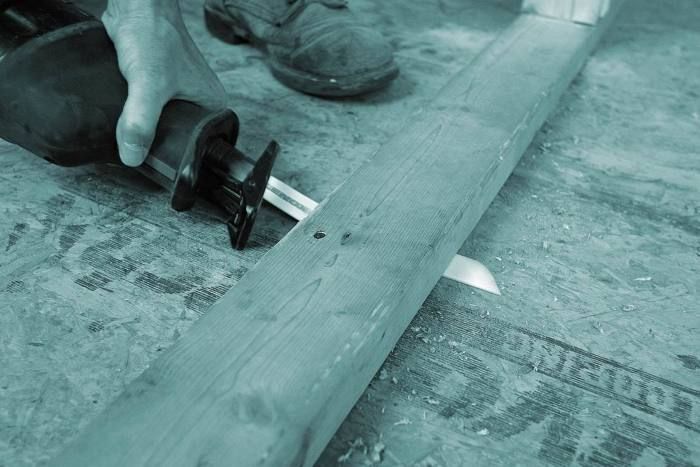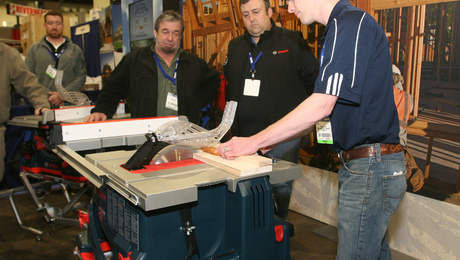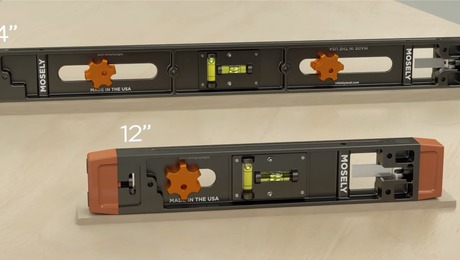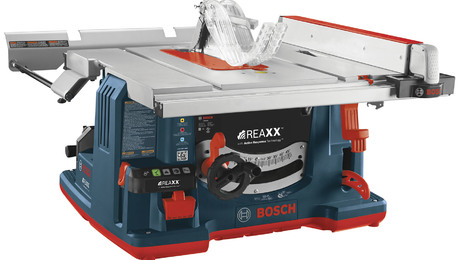
We’re gearing up for a torture test of demolition reciprocating saw blades, and we need your help.
What we plan to test for:
- How fast, and for how long can each blade cut through layers of plywood, shingles, framing lumber, tar paper, and embedded nails before kicking the bucket.
- The strength of the blade during a flexed cut (cutting the nails under a sole plate, for instance)
- The strength of the blade at the tang (is there anything worse than a blade that breaks off at the collet??)
What we want from you:
1.) What else do you want to know about demolition blades as long as we’re putting them to the test?
2.) Are there any brands you want us to look into that aren’t on the list below?
- Bosch
- Ridgid
- Freud
- Irwin
- Lenox
- Hitachi
- Makita
- Milwaukee
- MK Morse
- Dewalt
- Vermont American
Fine Homebuilding Recommended Products
Fine Homebuilding receives a commission for items purchased through links on this site, including Amazon Associates and other affiliate advertising programs.

Affordable IR Camera

Reliable Crimp Connectors

Handy Heat Gun




























View Comments
How about testing metal cutting ability, like cutting rebar and or bolts.
Please test the manufactureres premium blades if you are not going to test all the differing grades of blades offered.
maybe as a sidebar, compare the demolition blades cutting speed through wood to the speed with a wood blade, and metal cutting speed to a that of a dedicated metal blade.
Interesting ideas guys, keep 'em coming!
I have seen advertised something called the "Boar Blade" - a reciprocating saw blade with teeth on the back and a curved top front corner. This is supposed to be a real help when plunge-cutting.
I would be very interested in seeing if this design really is an improved way to plunge-cut; making that first opening does seem pretty hard on the blade.
Otherwise - looking at your picture above - I'd like to see if any of the 'flush cut' attachments are a real imporvement. After all, there's a limit to how strong the attachment to the saw can be.
I had bought some special demo blades at JLC Live a while back. They were thick and had curved blades. The paint is all worn off the blades, though they still cut well. I think the brand had some kind of animal name to it. They had 3 colors, red (aggressive wood), yellow (metal) and green (looks like all purpose). It might be worth asking around if they are still made (I'm sure one of the guys around Breaktime will recognize them) and add them in as a unique blade type.
Task blades?
http://www.task-tools.com/Commerce.Web/category_list.aspx?catID=7249
Available from my local millwork supplier Fairbank lumber. (Toronto Ontario)
If you could also test when the blades snap. We cut a lot large dimension lumber in tough places and when the blade lets go it's no fun.
Good News ! This has been on my list for some time. For the last year or so it seemed what ever brand I've used [Milwaukee/Lenox/Dewalt/Bosch] Have not performed as as in the past. Wear cutting steel and the ability to return to form after bending.
What about testing a Harbor Freight blade against the competition? I'm curious as to how these stack up to the main-line brands that cost substantially more.
A lot of times when cutting a hole in a roof to save time I'll cut with the shingles still on. It works great at first but then the blade starts to gum up with tar and it starts burning instead of cutting. I've tried a few different blades and found some work for much longer than others before getting gummed up. How about a "gum up" test?
Demolition blades like the Milwaukee Ax or Lenox Demo blade tend to be really thick and really wide...like 1" wide and .062 thick. It seems like your testing the flex of a blade that really isn't intended to flex. I'd use a standard 12" wood cutting blade to cut under the sole plate, it's more bendable.
Might want to add Starrett brand blades to your test. I've had good success with them, especially their metal cutting blades. Some of the "off brand" makes, such as Exchange-a-blade, also work well for those on a budget or when you know your going to be abusing them.
I'd include sears/craftsman in your brand survey.
How about testing how much flex the blades have when making cross cuts on lumber
Long blade rigidity. Nothing torques me off more than a blade that bends during a cut in dimension lumber, for instance cutting end nails from rafters and joists.
I would also like to see Hilti blades represented. I have been purchasing them in bulk for a number of years now and I'm very satisfied with the per unit price and their function.
BOSCH.
BOSCH.
Ok I just answered all the questions at once. No other blade manufactures' designs compare with the plunge capabilities of the Bosch. They have that funny little shape on the top and I'm not sure why they do what they do, but they are the best hands down. End of story.
Wayne
ditto on metal cutting performance
i hate crawling in to a crawlspace to cut out old cast iron drains enough as it is ...but then to have to keep switching to a fresh blade? ...ugh!
Angle grinders do work far better, but it's not always possible to get one into position.
Test that offset blade holder! I HATE IT, but I would love to know if I'm the only one. I'd love to see it compared to just using a long blade.
I would also enjoy seeing the boars blade against window cutouts in OSB
slip the blade in between two 2x4's and cut the nails while the blade is sandwiched in. Similar to cutting a jack stud from a king stud.
I'm pretty sure I've loccasionally picked up Ace branded blades at a hardware store near a job.
I would like to see blades tested on Hardie Plank and find the ones that last the longest. If you cut through OSB and Hardie Plank at the same time carbide blades are slow through OSB and regular blades get ripped up on Hardie Plank.
I have often found myself buying Kobalt brand blades from Lowes. They seem to work fine for the price, but...
Thanks for all of the comments, guys. I've been keeping track of all the suggestions, but I should point out that I need to limit this particular review to just demolition recip saw blades. If I open the doors to metal-cutting, hardi, and offset blades/attachments, the testing group will get out of hand. Right now, we're going to focus on just the demolition category, but if it works out well, we're certainly going to revisit the topic in the future!
If you have any more brand suggestions, or testing ideas, please keep 'em coming!
Could you test the Stone Tool Bully Hog blades? I have used them with good success.
Folks,
I am a fireman that sees a fair amount of auto accidents and thus more than a few emergency extrications. In many cases a battery operated recip saw is the quickest tool to use. We have been using the Lenox "Gold" for a few years and find it to really work good. Our experience finds you must let the saw and blade do the work and don't bull it thus heating the blade.
Any input as to blade life using this method in building demolition?
Funny coincidence that I am currently in the process of cutting out eight dry-rotted 2X12 floor joist underneath our old bathroom from a 1939 Florida house. When built they used 4 inch nails every two inches, 12 foot span to nail down the diagonal tongue and groove subfloor.
To try and pry them out...impossible! the best solution so far is to pry a small section enough to get a premium demolition blade between the subfloor and joist, at first it cuts the nails like butter!. The only problem is; as I move along the joist and the gap gets tighter the friction between the two pieces of wood heats up the blade and greatly diminishes the ability to "cut like butter".
I am having to use two blades per joist.
8 joist X 2 blades @ $6 a blade....well not a really inexpensive demo.
The Ability of the sharpness (tool life) to withstand or not withstand heat build-up.
To persons concerned, this test represents a wonderfull opportunity to FULLY test a comprehensive range of BOTh types and manufacturers. This responsibility should not be taken lightly. Blades as with any "consumable" can add up to a great sum when cost is examined fully. The point was brought up regarding general longevity. Interestingly enough this aspect is to a degree at odds with the overall proffit making strategy previlant ever more so today. The proffit margin on blades and the such are multiples of what can ever be earned for ANY powertool. There is a great deal of incentive for these blades to last just long enough. I wonder at times if this may bear upon the overall quality. Speaking of cost and just think Fein and you have said it all. Hopefully having the patent expire will oscilate some sense into them. hmmm another issue at hand..... My first "sawzall" in fact a Millwalkeeeee was akin to a newborn baby in relative power compared to most available powerhouses currently. (4.7A to 15A) and yet the dang tang has not evolved alongside this beefing up of amperage.Who will be the first to offer a new heaver tang beyond those currenty available. Pleas do not forget to test blades specific to metal cutting, many of us require this use frequently as posted by one commentator cutting cast iron. For him at least there is a "new and improved" available Both Millwalkee and Lennox have Diamond blades now available.Pricy mmmmm mmmmm but superior......
It would be very useful to mix in a number of lower cost blades and include the price consideration in the test.
I bought a handfull of Magna blades via Ebay a year or more ago. They hold up surprisingly well for a cheap blade. I'd buy them again over the expensive Lennox, Bosch, Milwaukee, etc.
Plaster and Lath really eats up the blades. Find a good one and I'll buy it.
I do alot of demo work and go through a pack of blades very quickly. The Ax, at $6-$7@ seems to be alot of advertising hype. I'm sure they are designed to get dull asap so you have to buy more! It doesn't seem to matter how expensive they are, they all seem to get dull at about the same rate.
Sidebar suggestion. Do an analysis of what blade characteristics are appropriate for certain tasks. TPI, set, etc for plaster, nail embedded wood, hard wood flooring, etc. Blades with different characteristics are often labeled for the same task. It would be useful to know what the best characteristics really are rather than depending on what the marketing department thinks they should be good for.
Please test ability to plunge cut without bending. I have had cheap blades bend into an S when plunging into drywall. I would appreciate plunge tests of common materials: 5/8 inch drywall, 1/2 and 5/8 inch plywood.
I have also used Kobalt blades from Lowes as a compromise between price and quality. At least I think it is a compromise. I would like to see them in any test.
I have also used Kobalt blades from Lowes as a compromise between price and quality. At least I think it is a compromise. I would like to see them in any test.
I say include the Kobalt blades as some have already proposed. I'd love to see a sidebar in the article if you come across any interesting storage solutions. Having all these different blades for different tasks is of no use if there is no way to organize them and easily tote them from job to job without taking up too much space in the toolbox...
trimetalblades.com they have a blade that has teeth on all sides of the blade.
Hi Justin-
Sounds like a great test that will really help out a lot of builders. Has the test been completed? Where are the results posted? By the way, I would argue that metal-cutting is a significant part of demolition rather than a separate category. As others posted with their examples, a systematic demolition often requires you to cut a lot of (metal) nails.